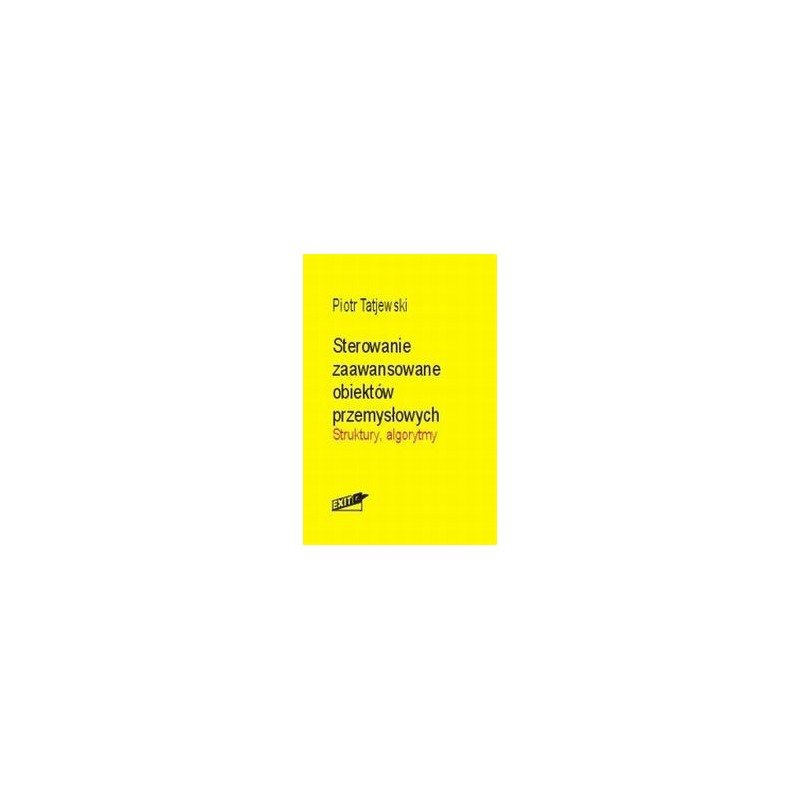- Out-of-Stock



About the book
Advances in electronics, computer engineering and information technology have caused a rapid development of control technology, accelerated and forced by competitive struggle on the market of industrial and consumer goods. In the control of layer structures prevailing in practice, the application of current optimization of work points of the installation, increasing the efficiency of production through the continuous adjustment of its parameters to the ambient conditions and the requirements of recipients, has become popular.
In the structure of current optimization, classical regulatory loops with linear PID controllers are not enough, the need for effective algorithms for multidimensional, non-linear control and taking into account signal limitations - so-called. advanced regulation algorithms.
Starting from the discussion of control issues in a layered structure, the book presents advanced regulation algorithms and optimization of the current work points of industrial facilities. The most widely presented area of advanced regulation discusses non-linear fuzzy algorithms of the Takagi-Sugeno type and predictive control algorithms. The former are relatively easy to design and effective nonlinear regulation techniques, and can be treated as a natural extension of known linear algorithms. On the other hand, predictive regulation is an advanced regulation technique that has been a huge success, exerting a dominant influence in recent years on both the directions of development of industrial regulatory systems and research works in this area. The book discusses the most important linear prediction algorithms for the practice, primarily DMC and GPC, as well as nonlinear algorithms, including algorithms important for effective applications with current linearisation of the non-linear model. In the field of on-going optimization, the most space is devoted to algorithms for iterative improvement of the work point in conditions of uncertainty.
The author's intention was to select and present the material so that the book would be useful not only for academic staff and doctoral students, but also (and perhaps above all) it served engineers designing or exploiting advanced control algorithms, as well as students of higher technical studies.
Dr hab. Eng. Piotr Tatjewski is a professor at Warsaw University of Technology, since 1996 director of the Institute of Automation and Applied Computer Science at the Faculty of Electronics and Information Technology. He deals with the issues of process control structures and algorithms, mainly technical ones. He conducts research in the field of advanced regulation algorithms, primarily predictive algorithms, using models of linear and non-linear objects, including fuzzy and described models of neural networks. His area of interest is also optimization algorithms, including current optimization in conditions of uncertainty and using measurement data. He also published a series of works on optimization methods of decomposition and coordination, useful for scattered, large-scale objects. He presented the results of research at many renowned foreign conferences. For several months he worked at the Technische Universitaet in Hanover, at the City University in London, and for a year he was a visiting professor at the University of Birmingham in England.
Graphic LCD 240x128, 144x104mm, LED backlight (WHITE) NEGATIVE BLUE, T6963C controller, character generator
No product available!
No product available!
No product available!
No product available!
No product available!
ARK terminal connector spring 12-pin, pitch 3.5 mm, non-detachable.
No product available!
No product available!
Camera in the form of a SoC chip with a CMOS MT9P111 sensor with a resolution of 2592x1944 px. It communicates via a parallel interface or MIPI. ArduCAM U3470
No product available!
No product available!
Assembled universal car computer, designed for people who want to improve the functionality of their car. AVT5495 C
No product available!
Audio player module with MP3 decoder and microSD card slot. The board is equipped with a Grove connector and communicates via the I2C interface. Seeed Studio 107020069
No product available!
No product available!
Adafruit 714 - RGB LCD Shield Kit w/ 16x2 Character Display - Only 2 pins used! - NEGATIVE DISPLAY
No product available!
Assembled power amplifier from LM3886. AVT1922 C
No product available!
No product available!
No product available!

